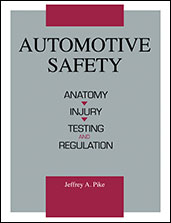Journal Article
Driver Lane Change Prediction Using Physiological Measures
2015-04-14
2015-01-1403
Side swipe accidents occur primarily when drivers attempt an improper lane change, drift out of lane, or the vehicle loses lateral traction. Past studies of lane change detection have relied on vehicular data, such as steering angle, velocity, and acceleration. In this paper, we use three physiological signals from the driver to detect lane changes before the event actually occurs. These are the electrocardiogram (ECG), galvanic skin response (GSR), and respiration rate (RR) and were determined, in prior studies, to best reflect a driver's response to the driving environment. A novel system is proposed which uses a Granger causality test for feature selection and a neural network for classification. Test results showed that for 30 lane change events and 60 non lane change events in on-the-road driving, a true positive rate of 70% and a false positive rate of 10% was obtained.



